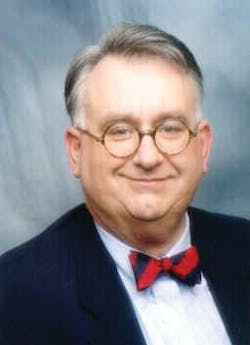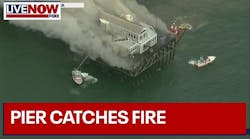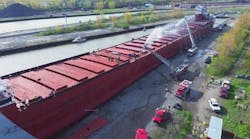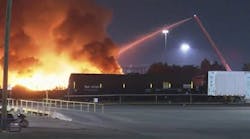Control is an important function within every organization. But this is especially true in fire departments. Given the critical nature of our work, we need to all be on the same operational page. Some form of similarity must exist between our personal goals and the goals of our organization. Let me suggest that in most cases reasonable people can be found operating within the constraints of reasonably constituted organizations. These however, are not the problems to be considered in this article.
This time the legitimate use of discipline as a training tool for lining up the views of the unwilling member with the official needs of the organization will be addressed. According to the text Management in the Fire Service, 5th ed., “Many officers and their staffs are uncomfortable when they hear the word discipline." For many folks, "… the word is almost interchangeable with the word punishment.” But it really is not about punishment, it is about education and perspective.
A definition of discipline seems appropriate at this point of our discussion. This definition will aid our shift in emphasis from the widely misunderstood negative connotation of discipline to a more modern, positive style. According to Webster, there are three basis ways in which we can examine discipline. Discipline is something which is;
- Subject to authority
- A form of instruction
- A form of self-control
Rather than dwell on the authorization aspects, most of which are well known, the goal should be the creation of a fire department environment wherein discipline is an accepted tool of organizational demarcation and delineation. I think that a great deal of the positive morale seen in effective organizations comes from the self-discipline which evolves as the norm of performance established by the members themselves.
An excellent example of this form of self-discipline came to the forefront following the season-opening loss of the New York Giants football team. That the mighty Super Bowl Champion Giants lost to the Dallas Cowboys in a real shocker to all of us veteran "Big Blue" fans. The cause of the Giants’ poor preseason performance was the subject of much speculation. Personally I thought that they were guilty of reading their own press clippings, but that's just me.
In the aftermath of their defeat, some of the veteran players felt that the coaching style of the team coach had allowed certain players to fall back into lazy patterns. I do not see how this was possible, but it seems they felt that there were those in their midst who needed harsh discipline and yelling. So these veteran players determined that they would provide the necessary “incentives” for those players who needed such things.
These self-disciplinary measures worked. The Giants played well. What they did was create an environment wherein tough, solid playing was the expected norm. Unfortunately, they failed to repeat the glory of their 2011 season, but 9-7 isn't all that bad. Over the years there have been some real ups and downs for us Giant fans, but the coach has worked to create an environment wherein the players knew what was expected of them and what the penalties for non-compliance were. That is how it should be.
This comes very close to the best sort of disciplinary scenario. The people involved knew the goals of the organization and the types of results that were needed to achieve the expectations of the group. They then developed additional environmental incentives above and beyond the negative disciplinary format established by the organization itself. The short term results have been quite good. As a Giants fan I can only hope that they have a long-term effect. We shall see how it goes this year when camp opens in August.
As officers or members in your local fire department, you too have a need to develop an organizational orientation; one which favors compliance with departmental regulations. Let’s start by providing the age-old advice that you must set the example. If you want to have your troops arrive at events of time, set the standard and be there early enough to greet them when they arrive. If you want everyone to be in the proper uniform, be sure that you are. I recall hearing the story of the chief who yelled at his troops for not being in uniform. Sadly, the man was in shower clogs and a bathing suit as he administered his diatribe
How, you may ask, do should we all come to the conclusion that it is more correct to follow the rules? A flash of consciousness can come from a combination of dedicated co-workers and selfless leaders. Over the years I have written a number of columns about those folks who so thoroughly support you that they would rather suffer physical pain than be found guilty of disappointing you. This provides a combination of an enlightened, learning environment and some excellent role models.
One of my former supervisors was a deputy chief, a true gentleman from the old school. In his 40-plus years of service, the man never took a sick day. Each order which he received from headquarters was received and carried out in a straightforward, concerned manner.
Never one to raise his voice, this man was always in complete control. Perhaps it was the confidence which he exuded that formed a great deal of the environment wherein we labored. Never once did he publicly speak against the department, nor did he ever conduct himself in any way other than as a complete gentleman. It is his example which was frequently stimulated my instincts to be an obedient, willing member of the fire department team, rather than lose my temper. These were the stories which we shared at his wake earlier this year.
It would be my opinion that whatever type or manner of discipline exists in any organization, it is a direct outgrowth of the leadership style of the head of the fire department. As Tom Peters has stressed in a number of his texts and lectures, it is up to the leaders of any organization to form a cohesive picture of the direction in which they feel the organization should be headed. They are then obligated to pass that vision freely down through the organization. And so it should be in the case of discipline.
It is the leaders’ vision of discipline that determines how discipline is delivered through the organization. Discipline must be evenly applied at all levels. Those people trained by veterans of the Russian State Police will deliver a totally different approach to discipline than those who have been trained in a nurturing, supportive environment where obedience to the norms of fire department conduct was infused into people as a matter of daily living. As with all things, it is teaching by example which leaves the strongest impression.
The best was to work with people is to coach them in the desired direction. Much has been made of the fact that many of our greatest leaders have had the influence of a strong mentor.
Such was the relationship between Dwight D. Eisenhower and General Fox Connor in the years between World War I and World War II. Eisenhower was later to write about him that, “… life with General Connor was a sort of graduate school in military affairs … In a lifetime of associations with great and good men he is the one more or less invisible figure to whom I owe an incalculable debt.” Connor continually challenged and supported Eisenhower through a conscious period of organizational, as well as personal growth and development. As has often been emphasized, mentors take risks with people and those people grow as a result of those challenges which they receive.
So it should be in the area of discipline. We must first spell out reasonable guidelines for our people. We must then create in them an understanding of the organizational boundaries within which they are to function. Having done these two things, we must give them the freedom to try their wings at being a viable part of the team. When they succeed, be supportive and when they fail be even more supportive. The results will be well worth the effort.
- See Harry Live! Dr. Harry Carter will be presenting “Small-Group Leadership Dynamics: Growing Your Fire Department from the Bottom Up” during at Firehouse Expo in Nashville, Oct. 18-22.
HARRY R. CARTER, Ph.D., a Firehouse contributing editor, is a fire protection consultant based in Adelphia, NJ. He is chairman of the Board of Commissioners in Howell Township Fire District 2 and retired from the Newark Fire Department as a battalion commander. Dr. Carter has been a member of the Adelphia Fire Company since 1971, serving as chief in 1991. He is a life member and past president of the International Society of Fire Service Instructors and life member of the National Fire Protection Association. He is vice president of the Institution of Fire Engineers-USAmerica. Dr. Carter holds a Ph.D. in organization and management from Capella University in Minneapolis, MN.






